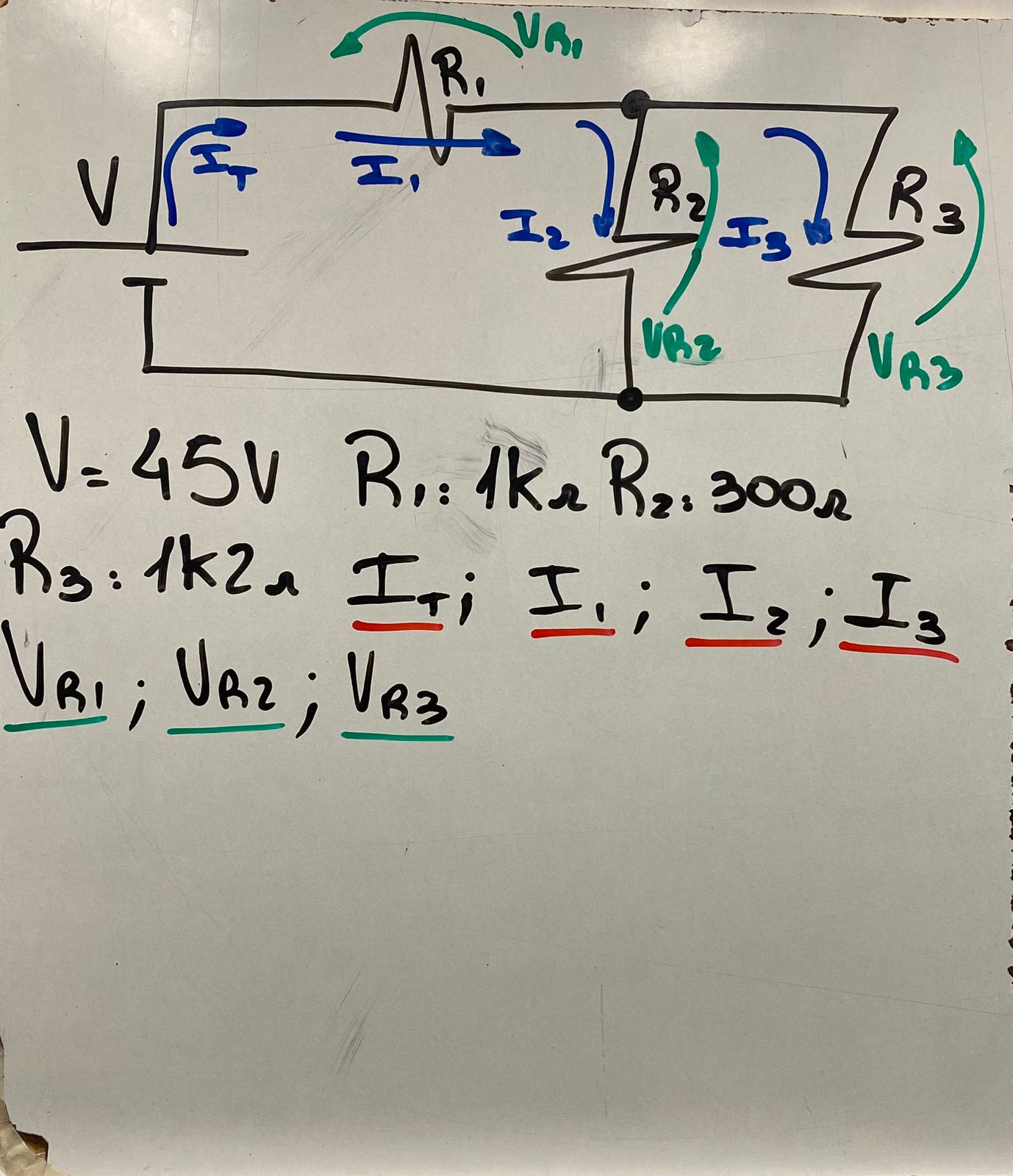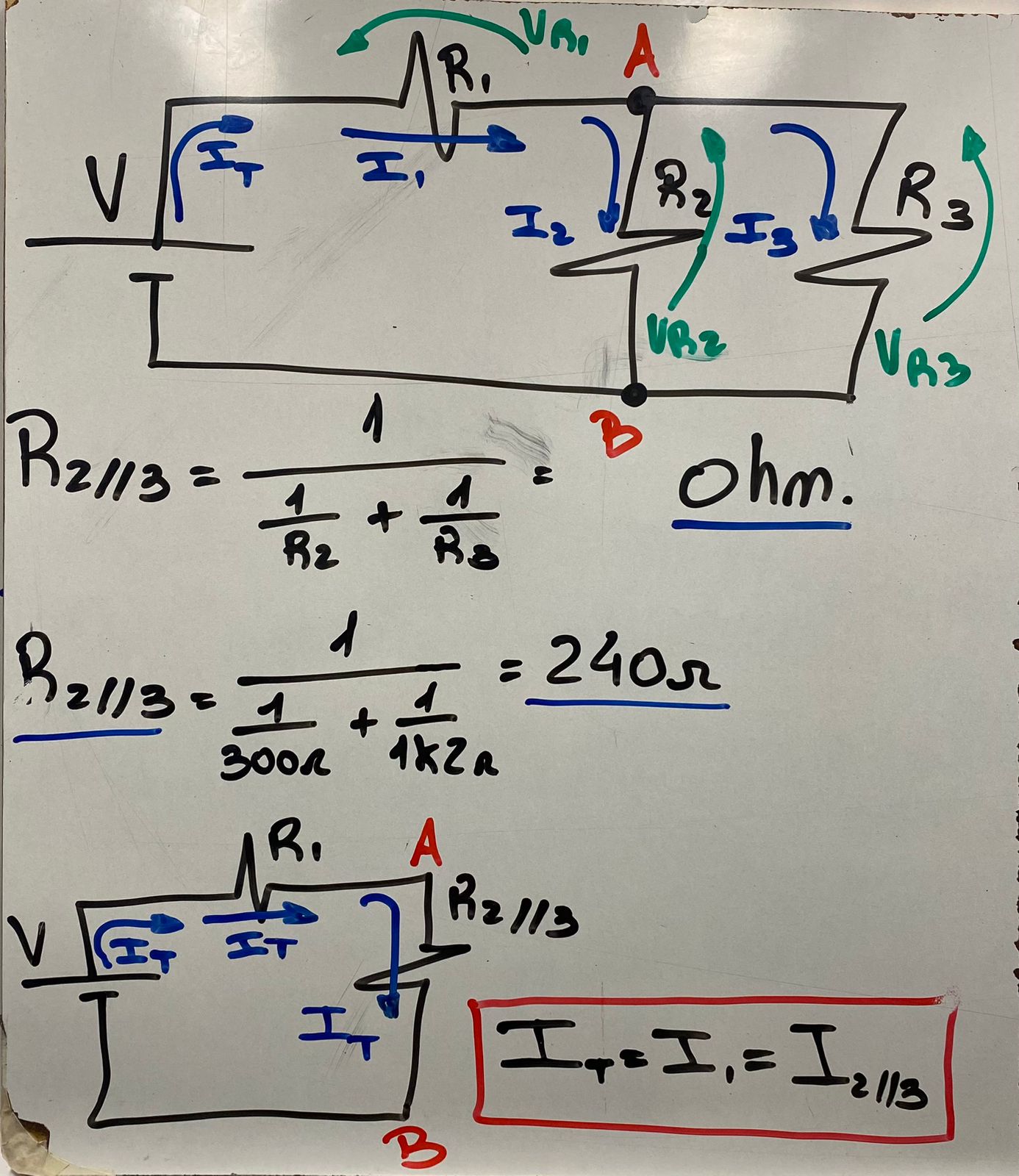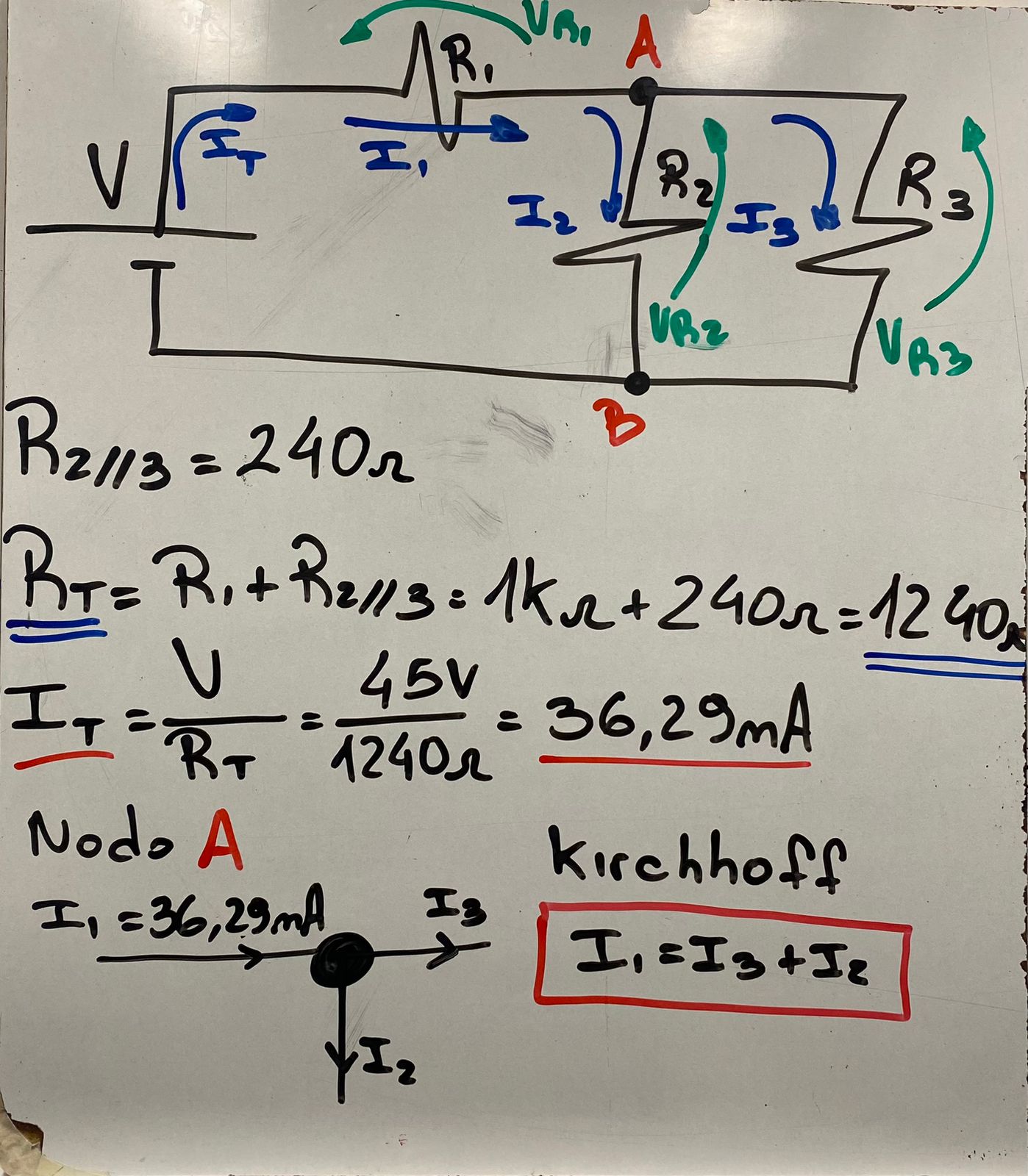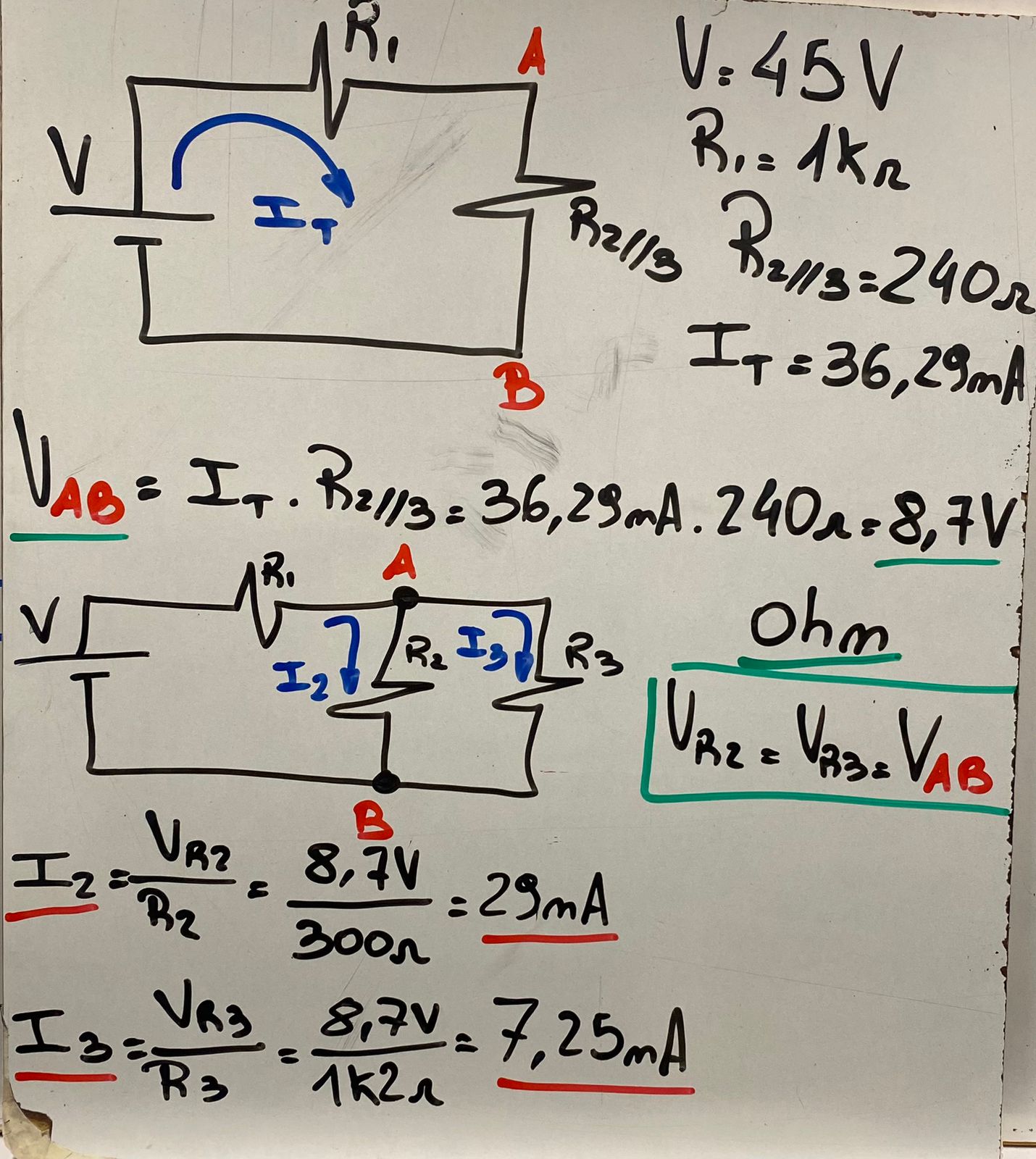[ESP/ENG] Aplicación Práctica de las Leyes de Ohm, Kirchhoff en Circuitos Eléctricos Parte 10 bis A | Practical Application of Ohm, Kirchhoff's Laws in Electrical Circuits Part 10 bis A
[ESP]
¿Cómo están amigos de Hive?
Llegó el día en el que fusionamos las prácticas individuales de los ejercicios en serie y paralelo resueltos en los blogs pasados para poder abordar y resolver el famoso circuito mixto de resistencias. A partir de ahora, aplicaremos todo lo aprendido para entender cómo se combinan estas configuraciones y cómo calcular la resistencia total para analizar a detalle los futuros circuitos, que incluye tanto elementos en serie como en paralelo. Este enfoque nos permitirá manejar circuitos más complejos y desarrollar una comprensión más profunda de los principios de la electronica.
A continuacion , les muestro el circuito que vamos a analizar. El objetivo es encontrar las caídas de tensión y las corrientes en cada rama. ¡Acompáñenme y resolvamos juntos este nuevo reto!"
A primera vista y repasando un poco los dos ejercicios trabajados anteriormente, podemos destacar que la corriente total It es igual a I1 y las caidas de tensiones de R2 y R3 es la misma, no asi su curriente por cada rama. Para poder descubrir la It necesitamos Rt, vamos a ahcerlo...
Para calcular la resistencia total 𝑅𝑡, primero debemos resolver los componentes en paralelo del circuito. En este caso, solo hay una combinación en paralelo que necesitamos considerar. Según la ley de Kirchhoff, la corriente total 𝐼𝑡 se divide en las corrientes 𝐼1 y 𝐼2//3, donde 𝐼2//3 representa la corriente a través de las resistencias 𝑅2 y 𝑅3 en paralelo. Al resolver este paralelo, podemos encontrar la resistencia equivalente y así avanzar en el cálculo de la resistencia total del circuito.
Hemos logrado obtener una de las incógnitas, que es la corriente total 𝐼𝑡, gracias a la aplicación de las leyes que hemos aprendido. Estas leyes nos permitieron analizar y resolver este circuito con éxito.
El poder de manejar las sumatorias de resistencias y controlar el análisis de los circuitos nos permitió llegar a los resultados finales de corrientes y caídas de tensión que se solicitaban desde el principio. Gracias a estas técnicas, pudimos resolver el circuito de manera efectiva. Además, les dejo el circuito del próximo ejercicio que vamos a resolver. ¡No se lo pierdan! Será una excelente oportunidad para aplicar lo aprendido y enfrentar un nuevo desafío juntos. ¡Nos vemos en el próximo blog!

[ENG]
How are you Hive friends?
The day came when we merged the individual practices of the series and parallel exercises solved in past blogs to be able to address and solve the famous mixed resistance circuit. From now on, we will apply everything we have learned to understand how these configurations are combined and how to calculate the total resistance to analyze future circuits in detail, which includes both series and parallel elements. This approach will allow us to handle more complex circuits and develop a deeper understanding of the principles of electronics.
Next, I show you the circuit that we are going to analyze. The objective is to find the voltage drops and currents in each branch. Join me and let's solve this new challenge together!"
At first glance and reviewing the two exercises worked on previously, we can highlight that the total current It is equal to I1 and the voltage drops of R2 and R3 are the same, but not the current for each branch. In order to discover the It we need Rt, let's do it...
To calculate the total resistance 𝑅𝑡, we must first solve for the parallel components of the circuit. In this case, there is only one parallel combination that we need to consider. According to Kirchhoff's law, the total current 𝐼𝑡 is divided into currents 𝐼1 and 𝐼2//3, where 𝐼2//3 represents the current through resistors 𝑅2 and 𝑅3 in parallel. By solving this parallel, we can find the equivalent resistance and thus advance in the calculation of the total resistance of the circuit.
We have managed to obtain one of the unknowns, which is the total current 𝐼𝑡, thanks to the application of the laws that we have learned. These laws allowed us to analyze and solve this circuit successfully.
The power to manage the sums of resistances and control the analysis of the circuits allowed us to reach the final results of currents and voltage drops that were requested from the beginning. Thanks to these techniques, we were able to solve the circuit effectively. In addition, I leave you the circuit of the next exercise that we are going to solve. Do not miss it! It will be an excellent opportunity to apply what you have learned and face a new challenge together. See you in the next blog!





Congratulations @profwhitetower! You have completed the following achievement on the Hive blockchain And have been rewarded with New badge(s)
Your next target is to reach 900 upvotes.
You can view your badges on your board and compare yourself to others in the Ranking
If you no longer want to receive notifications, reply to this comment with the word
STOPThanks for your contribution to the STEMsocial community. Feel free to join us on discord to get to know the rest of us!
Please consider delegating to the @stemsocial account (85% of the curation rewards are returned).
You may also include @stemsocial as a beneficiary of the rewards of this post to get a stronger support.